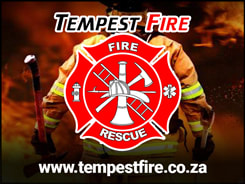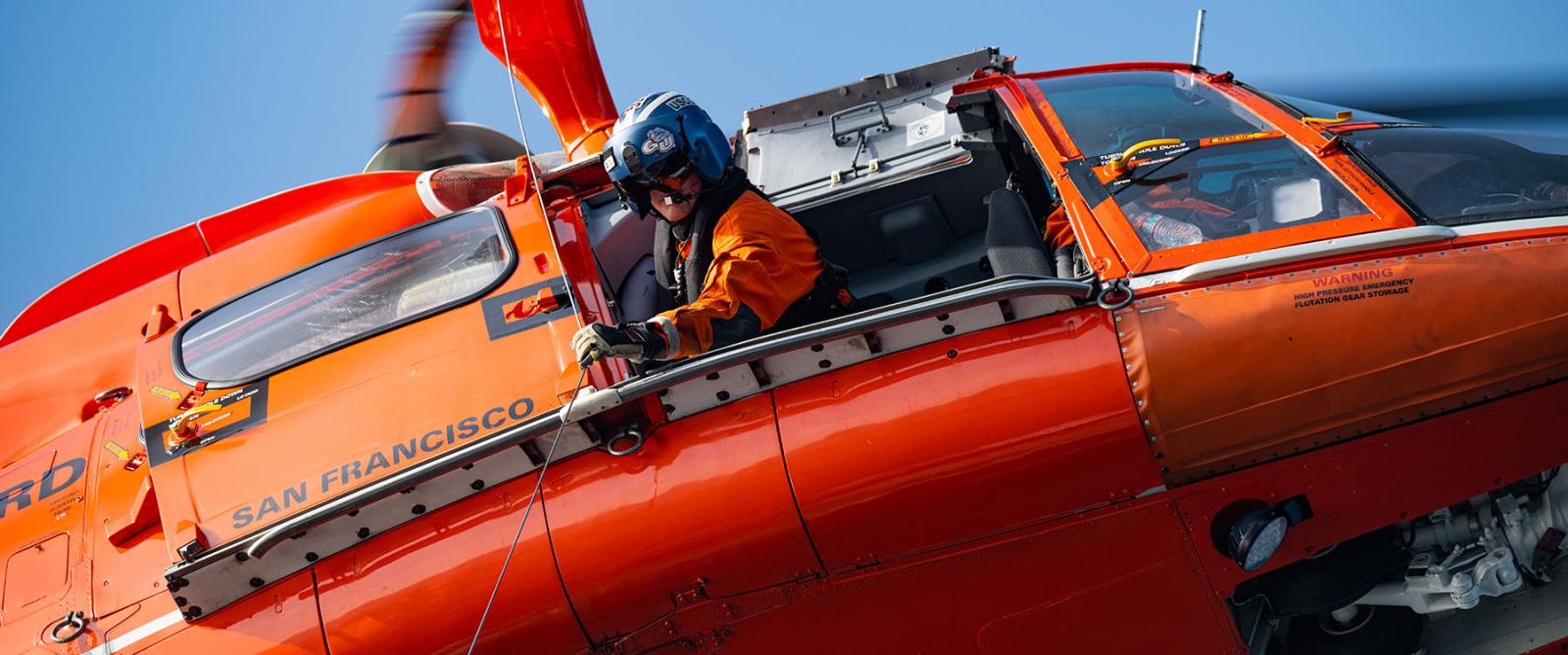- Home
- Magazines
-
Newsletters
- 19 July 2024
- 12 July 2024
- 5 July 2024
- 28 June 2024
- 14 June 2024
- 7 June 2024
- 31 May 2024
- 24 May 2024
- 17 May 2024
- 10 May 2024
- 3 May 2024
- 26 April 2024
- 19 April 2024
- 12 April 2024
- 22 March 2024
- 15 March 2024
- 8 March 2024
- 1 March 2024
- 23 February 2024
- 16 February 2024
- 9 February 2024
- 26 January 2024
- 19 January 2024
- 12 January 2024
- 22 December 2023
- 1 December 2023
- 24 November 2023
- 10 November 2023
- 3 November 2023
- 27 October 2023
- 20 October 2023
- 13 October 2023
- 6 October 2023
- 29 September 2023
- 22 September 2023
- 15 September 2023
- 8 September 2023
- 25 August 2023
- 18 August 2023
- 11 August 2023
- 4 August 2023
- 28 July 2023
- 21 July 2023
- 14 July 2023
- 7 July 2023
- 30 June 2023
- 23 June 2023
- 15 June 2023
- 2 June 2023
- 26 May 2023
- 19 May 2023
- 12 May 2023
- 5 May 2023
- 28 April 2023
- 21 April 2023
- 14 April 2023
- 6 April 2023
- 31 March 2023
- 24 March 2023
- 17 March 2023
- 10 March 2023
- 3 March 2023
- 24 February 2023
- 17 February 2023
- 10 February 2023
- 3 February 2023
- 27 January 2023
- 13 January 2023
- 22 December 2022
- 15 December 2022
- 9 December 2022
- 2 December 2022
- 25 November 2022
- 18 November 2022
- 11 November 2022
- 4 November 2022
- Advertising
- Subscribe
- Articles
-
Galleries
- AOSH Firexpo 2024
- Midvaal Fit to Fight Fire 2024
- WoF KNP 2023 Gallery
- TFA 2023 Gallery
- DMISA Conference 2023
- ETS 2023 Gallery
- Drager Fire Combat and Rescue Challenge 2023
- AOSH Firexpo 2023
- Midvaal Fit to Fight Fire
- WC IFFD 2023
- NMU 13th Fire Management Symposium 2022
- JOIFF Africa Conference 2022
- ETS 2022 Gallery
- TFA 2022 Gallery
- IFFD 2018
- SAESI
- TFA
- WRC 2018
- WRC 2019
- A-OSH/Securex
- IFE AGM 2019
- ETS Ind Fire Comp Nov 2019
- ETS Challenge 2021
- Drager launch
- Drager Fire Combat and Rescue Challenge 2022
- TFA
- Contact
- Home
- Magazines
-
Newsletters
- 19 July 2024
- 12 July 2024
- 5 July 2024
- 28 June 2024
- 14 June 2024
- 7 June 2024
- 31 May 2024
- 24 May 2024
- 17 May 2024
- 10 May 2024
- 3 May 2024
- 26 April 2024
- 19 April 2024
- 12 April 2024
- 22 March 2024
- 15 March 2024
- 8 March 2024
- 1 March 2024
- 23 February 2024
- 16 February 2024
- 9 February 2024
- 26 January 2024
- 19 January 2024
- 12 January 2024
- 22 December 2023
- 1 December 2023
- 24 November 2023
- 10 November 2023
- 3 November 2023
- 27 October 2023
- 20 October 2023
- 13 October 2023
- 6 October 2023
- 29 September 2023
- 22 September 2023
- 15 September 2023
- 8 September 2023
- 25 August 2023
- 18 August 2023
- 11 August 2023
- 4 August 2023
- 28 July 2023
- 21 July 2023
- 14 July 2023
- 7 July 2023
- 30 June 2023
- 23 June 2023
- 15 June 2023
- 2 June 2023
- 26 May 2023
- 19 May 2023
- 12 May 2023
- 5 May 2023
- 28 April 2023
- 21 April 2023
- 14 April 2023
- 6 April 2023
- 31 March 2023
- 24 March 2023
- 17 March 2023
- 10 March 2023
- 3 March 2023
- 24 February 2023
- 17 February 2023
- 10 February 2023
- 3 February 2023
- 27 January 2023
- 13 January 2023
- 22 December 2022
- 15 December 2022
- 9 December 2022
- 2 December 2022
- 25 November 2022
- 18 November 2022
- 11 November 2022
- 4 November 2022
- Advertising
- Subscribe
- Articles
-
Galleries
- AOSH Firexpo 2024
- Midvaal Fit to Fight Fire 2024
- WoF KNP 2023 Gallery
- TFA 2023 Gallery
- DMISA Conference 2023
- ETS 2023 Gallery
- Drager Fire Combat and Rescue Challenge 2023
- AOSH Firexpo 2023
- Midvaal Fit to Fight Fire
- WC IFFD 2023
- NMU 13th Fire Management Symposium 2022
- JOIFF Africa Conference 2022
- ETS 2022 Gallery
- TFA 2022 Gallery
- IFFD 2018
- SAESI
- TFA
- WRC 2018
- WRC 2019
- A-OSH/Securex
- IFE AGM 2019
- ETS Ind Fire Comp Nov 2019
- ETS Challenge 2021
- Drager launch
- Drager Fire Combat and Rescue Challenge 2022
- TFA
- Contact
|
28 July 2023
|
Technology: The US Coast Guard must use unmanned aerial systems and AI in search and rescue
The call of the ocean is strong, and so is the responsibility of those who protect it. The US Coast Guard’s search and rescue (SAR) mission demands the utmost dedication and unwavering bravery from its personnel, who often find themselves at the mercy of rough seas and hostile weather conditions. Now, there is a way to make this task a little less risky and a little more efficient. Enter unmanned aerial systems (UAS) and artificial intelligence (AI), two technologies with the potential to revolutionise the SAR landscape. By combining the power of UASs and AI, the Coast Guard can take a giant leap forward in its response to maritime emergencies, saving more lives and protecting US waters with greater precision and speed.
Coast Guard Search and Rescue
The Coast Guard’s dedication to safeguarding lives and responding to emergencies stands unparalleled, covering millions of square nautical miles and thousands of miles of coastline. Modernising procedures with UAS and AI would revolutionise the standard response to emergencies at sea, enhancing situational awareness and delivering real-time data to inform mission-critical decisions. As a signatory to the International Convention on Maritime Search and Rescue, the Coast Guard is not only obligated to adhere to its provisions but also shoulders a responsibility to contribute to the development and adoption of modern approaches, including the use of UASs and AI. This would not only improve Coast Guard SAR capabilities but would also set an example for other organizations to follow, ensuring those in distress receive timely assistance no matter where they are in the world.
Closer to home, the Coast Guard’s approach to SAR involves deploying cutters and planes to locate and assist mariners in distress. Search areas are systematically prioritized based on the likelihood of finding survivors and the assumed severity of their condition. However, SAR assets have finite capabilities and their deployment is based on estimated locations of mariners in distress. In some cases, these targets are unable to emit distress signals and their location is unknown, resulting in vast and widening search areas. Though awe inspiring, tales of coincidental flyovers leading to the rescue of those stranded at sea are sadly few and far between. Situations without promising leads typically have dishearteningly low rates of success and existing techniques cannot always cover all areas where survivors may be located.
Traditional Coast Guard assets require considerable resources to account for fuel, maintenance and personnel while responding. These costs limit the frequency and scope of teams and can result in delayed response times. Utilising UAVs paired with AI in initial reconnaissance in lieu of existing assets would dramatically decrease the risk imposed on the safety and wellbeing of the search crew and while minimising the operational costs associated with SAR.
Unmanned aerial systems
In 2022, a team of Coast Guard Academy students developed and tested a pilot course on Coast Guard Wargaming, simulating SAR, disaster response, fisheries management and drug and migrant interdiction. During the simulations, it became clear that the assets used in SAR today have daunting shortcomings that UAS and AI could address. UASs offer a range of abilities that would drastically reduce limitations while flying in harsh weather conditions and in remote locations where traditional SAR assets are limited in effectiveness or altogether unsafe to use. The need for crew members to physically venture into hazardous areas is reduced with UAS flying into regions that might be inaccessible or unsafe for traditional manned assets. Given the heightened impact of increased error during night time and adverse weather operations, it is imperative to allocate flights, watch standing duties, and collateral responsibilities while prioritizing sufficient crew rest for these assignments.
Remotely controlled aircraft provide real-time situational awareness with advanced sensors and imaging that relay detailed information, reducing the time required to locate and rescue individuals in distress. UASs and AI could be to traditional SAR what the binoculars became to standing a basic lookout watch, seeing much farther than what was previously possible with the naked eye.
Traditional SAR and security procedures are often based on triangulation of data such as drift, wind, current and intelligence gathering. This information can be managed effectively but the process subject to finite data and a limited number of outcomes. AI would be a copilot in SAR decision-making, vastly increasing the data available and streamlining operations typically requiring intense mental exertion and prolonged hours for crew.
AI algorithms analyse vast amounts of data collected by UAS in real-time, identifying patterns and anomalies that generate leads toward finding a specific SAR mark. This data-driven approach lightens the cognitive load on the crew, allowing them to focus on critical tasks and making more informed decisions promptly.
Specialised software ensures sensors on UASs can be equipped with AI and machine learning, making them much more easily and cost-effectively compatible than AI and machine learning with legacy fixed-wing aircraft. These systems provide real-time situational awareness, identifying hazards and analysing crucial data, reducing the time between a distress signal and the arrival of rescue teams and drastically improving SAR effectiveness.
Picture the moment a mariner is stranded in the vast ocean, with dwindling hope and scarce time. The Coast Guard receives a distress signal and promptly dispatches its SAR team, armed with cutting-edge equipment. The AI-powered system crunches reference data to pinpoint a search area. A UAS takes off, no crew preparation needed. The mariner’s location is identified and the rescue team is informed of crucial environmental factors analysed by the AI, increasing the chances of a successful outcome.
Looking forward
UASs offer a lifeline to those in distress but legal and regulatory challenges threaten to drown out their potential. A complex web of rules governs the use of UASs, including Federal Aviation Administration (FAA) regulations, state and local laws, and other federal guidelines. While the FAA has made strides in developing an unmanned system rulebook, its restrictions requiring operators always maintain line of sight with their aircraft and the implementation of no-fly zones have limited their range and effectiveness. To fully realise the potential of UASs, the Coast Guard must work with regulatory agencies seeking exemptions from FAA regulations that restrict certain areas while still prioritizing investment in advanced platforms, establishing airbases in strategic locations and creating a specialied department responsible for UAS management and training.
Coast Guard operations are only as good as the people, tools and resources at its disposal. UASs have the potential to enhance SAR capabilities but only if the Coast Guard invests in their infrastructure. It will be essential for the service to establish a new department for managing UAS to ensure that the new systems are incorporated into standard operating procedure. The Coast Guard also will need to provide specialised training on how to work effectively with UAS, how to keep them up to date with the latest advancements, mastering flight practices and data assessment and managing project infrastructure. Investing in a strong launch, creating a specialised department and providing comprehensive training is the blueprint for revolutionising SAR.
To improve is to change, to be perfect is to change often.
These words from Sir Winston Churchill certainly apply to Coast Guard search-and-rescue methods. Adopting and mastering the use of UASs and AI will vastly improve the Coast Guard’s SAR mission success.
1. International Maritime Organisation, SAR Convention: International Convention on Maritime Search and Rescue, 1979: As Amended by Resolution MSC. 70(69) and MSC. 155(78) (London: International Maritime Organisation, 1979; Reprint, London: International Maritime Organisation, 2006).
2. International Maritime Organisation, SAR Convention: International Convention on Maritime Search and Rescue.
3. Correspondence with three US Coast Guard Academy cadets conducting capstone-level research under the name “Detecting Orange” on variations of unmanned aerial vehicles with potential to be deployed on US Coast Guard cutters.
Written by Cadet First Class Robert DeLillo, US Coast Guard
Photo: A Coast Guard Air Station Francisco MH-Dolphin helicopter conducts an exercise near Point Reyes, California, in April 2025. Using artificial intelligence and unmanned aerial systems would make Coast Guard search and rescue safer and more effective. US Coast Guard (Hunter Schnable)
Source: US Naval Institute
Coast Guard Search and Rescue
The Coast Guard’s dedication to safeguarding lives and responding to emergencies stands unparalleled, covering millions of square nautical miles and thousands of miles of coastline. Modernising procedures with UAS and AI would revolutionise the standard response to emergencies at sea, enhancing situational awareness and delivering real-time data to inform mission-critical decisions. As a signatory to the International Convention on Maritime Search and Rescue, the Coast Guard is not only obligated to adhere to its provisions but also shoulders a responsibility to contribute to the development and adoption of modern approaches, including the use of UASs and AI. This would not only improve Coast Guard SAR capabilities but would also set an example for other organizations to follow, ensuring those in distress receive timely assistance no matter where they are in the world.
Closer to home, the Coast Guard’s approach to SAR involves deploying cutters and planes to locate and assist mariners in distress. Search areas are systematically prioritized based on the likelihood of finding survivors and the assumed severity of their condition. However, SAR assets have finite capabilities and their deployment is based on estimated locations of mariners in distress. In some cases, these targets are unable to emit distress signals and their location is unknown, resulting in vast and widening search areas. Though awe inspiring, tales of coincidental flyovers leading to the rescue of those stranded at sea are sadly few and far between. Situations without promising leads typically have dishearteningly low rates of success and existing techniques cannot always cover all areas where survivors may be located.
Traditional Coast Guard assets require considerable resources to account for fuel, maintenance and personnel while responding. These costs limit the frequency and scope of teams and can result in delayed response times. Utilising UAVs paired with AI in initial reconnaissance in lieu of existing assets would dramatically decrease the risk imposed on the safety and wellbeing of the search crew and while minimising the operational costs associated with SAR.
Unmanned aerial systems
In 2022, a team of Coast Guard Academy students developed and tested a pilot course on Coast Guard Wargaming, simulating SAR, disaster response, fisheries management and drug and migrant interdiction. During the simulations, it became clear that the assets used in SAR today have daunting shortcomings that UAS and AI could address. UASs offer a range of abilities that would drastically reduce limitations while flying in harsh weather conditions and in remote locations where traditional SAR assets are limited in effectiveness or altogether unsafe to use. The need for crew members to physically venture into hazardous areas is reduced with UAS flying into regions that might be inaccessible or unsafe for traditional manned assets. Given the heightened impact of increased error during night time and adverse weather operations, it is imperative to allocate flights, watch standing duties, and collateral responsibilities while prioritizing sufficient crew rest for these assignments.
Remotely controlled aircraft provide real-time situational awareness with advanced sensors and imaging that relay detailed information, reducing the time required to locate and rescue individuals in distress. UASs and AI could be to traditional SAR what the binoculars became to standing a basic lookout watch, seeing much farther than what was previously possible with the naked eye.
Traditional SAR and security procedures are often based on triangulation of data such as drift, wind, current and intelligence gathering. This information can be managed effectively but the process subject to finite data and a limited number of outcomes. AI would be a copilot in SAR decision-making, vastly increasing the data available and streamlining operations typically requiring intense mental exertion and prolonged hours for crew.
AI algorithms analyse vast amounts of data collected by UAS in real-time, identifying patterns and anomalies that generate leads toward finding a specific SAR mark. This data-driven approach lightens the cognitive load on the crew, allowing them to focus on critical tasks and making more informed decisions promptly.
Specialised software ensures sensors on UASs can be equipped with AI and machine learning, making them much more easily and cost-effectively compatible than AI and machine learning with legacy fixed-wing aircraft. These systems provide real-time situational awareness, identifying hazards and analysing crucial data, reducing the time between a distress signal and the arrival of rescue teams and drastically improving SAR effectiveness.
Picture the moment a mariner is stranded in the vast ocean, with dwindling hope and scarce time. The Coast Guard receives a distress signal and promptly dispatches its SAR team, armed with cutting-edge equipment. The AI-powered system crunches reference data to pinpoint a search area. A UAS takes off, no crew preparation needed. The mariner’s location is identified and the rescue team is informed of crucial environmental factors analysed by the AI, increasing the chances of a successful outcome.
Looking forward
UASs offer a lifeline to those in distress but legal and regulatory challenges threaten to drown out their potential. A complex web of rules governs the use of UASs, including Federal Aviation Administration (FAA) regulations, state and local laws, and other federal guidelines. While the FAA has made strides in developing an unmanned system rulebook, its restrictions requiring operators always maintain line of sight with their aircraft and the implementation of no-fly zones have limited their range and effectiveness. To fully realise the potential of UASs, the Coast Guard must work with regulatory agencies seeking exemptions from FAA regulations that restrict certain areas while still prioritizing investment in advanced platforms, establishing airbases in strategic locations and creating a specialied department responsible for UAS management and training.
Coast Guard operations are only as good as the people, tools and resources at its disposal. UASs have the potential to enhance SAR capabilities but only if the Coast Guard invests in their infrastructure. It will be essential for the service to establish a new department for managing UAS to ensure that the new systems are incorporated into standard operating procedure. The Coast Guard also will need to provide specialised training on how to work effectively with UAS, how to keep them up to date with the latest advancements, mastering flight practices and data assessment and managing project infrastructure. Investing in a strong launch, creating a specialised department and providing comprehensive training is the blueprint for revolutionising SAR.
To improve is to change, to be perfect is to change often.
These words from Sir Winston Churchill certainly apply to Coast Guard search-and-rescue methods. Adopting and mastering the use of UASs and AI will vastly improve the Coast Guard’s SAR mission success.
1. International Maritime Organisation, SAR Convention: International Convention on Maritime Search and Rescue, 1979: As Amended by Resolution MSC. 70(69) and MSC. 155(78) (London: International Maritime Organisation, 1979; Reprint, London: International Maritime Organisation, 2006).
2. International Maritime Organisation, SAR Convention: International Convention on Maritime Search and Rescue.
3. Correspondence with three US Coast Guard Academy cadets conducting capstone-level research under the name “Detecting Orange” on variations of unmanned aerial vehicles with potential to be deployed on US Coast Guard cutters.
Written by Cadet First Class Robert DeLillo, US Coast Guard
Photo: A Coast Guard Air Station Francisco MH-Dolphin helicopter conducts an exercise near Point Reyes, California, in April 2025. Using artificial intelligence and unmanned aerial systems would make Coast Guard search and rescue safer and more effective. US Coast Guard (Hunter Schnable)
Source: US Naval Institute
Quick navigation
Social
|
Who are we?FRI Media (Pty) Ltd is an independent publisher of technical magazines including the well-read and respected Fire and Rescue International, its weekly FRI Newsletter and the Disaster Management Journal. We also offer a complete marketing and publishing package, which include design, printing and corporate wear and gifts. |
Weekly FRI Newsletter |
© Copyright 2018 Fire and Rescue International. All Rights Reserved.





